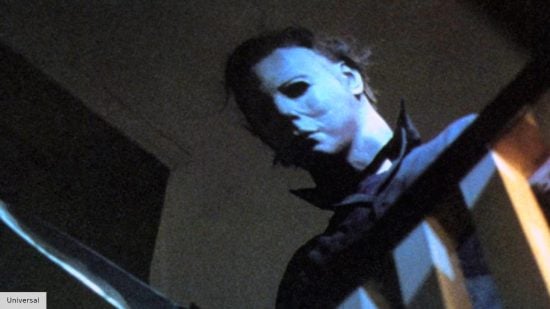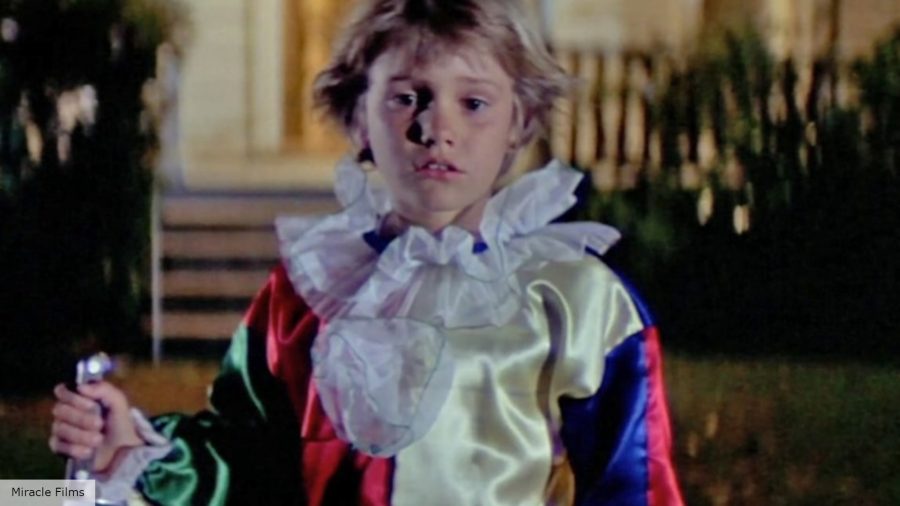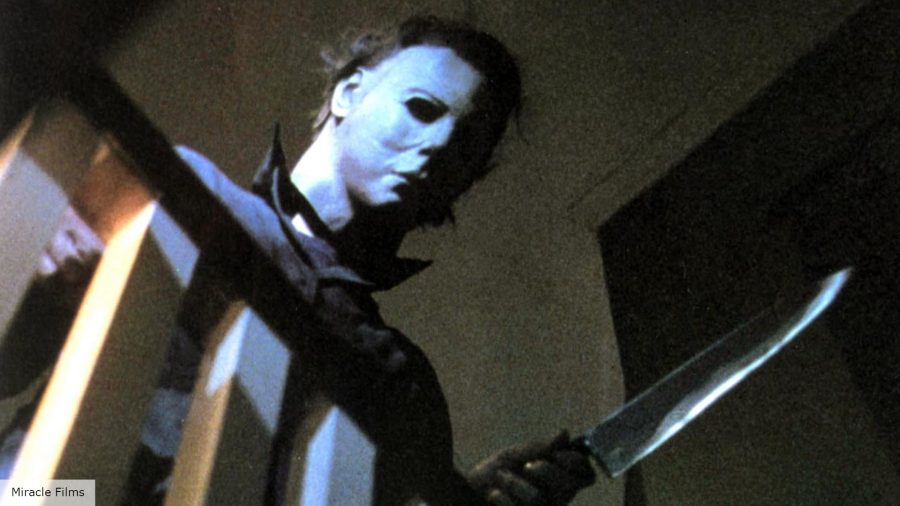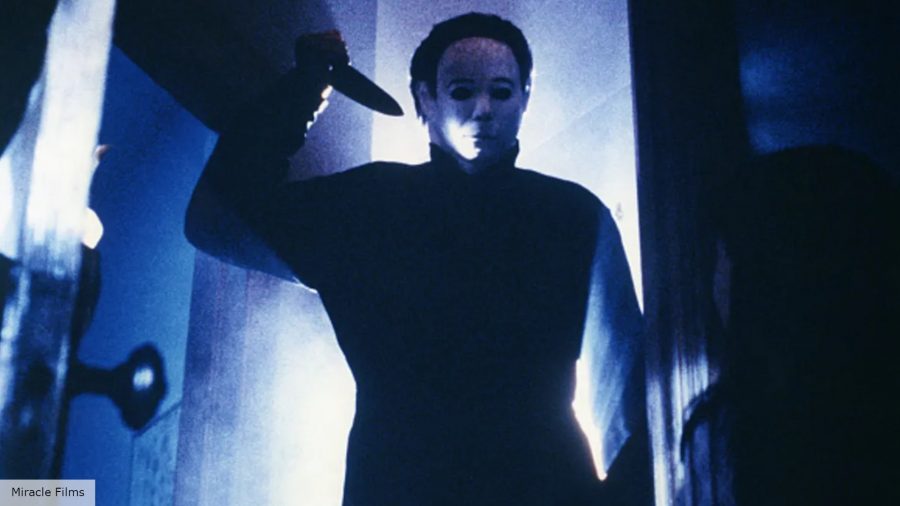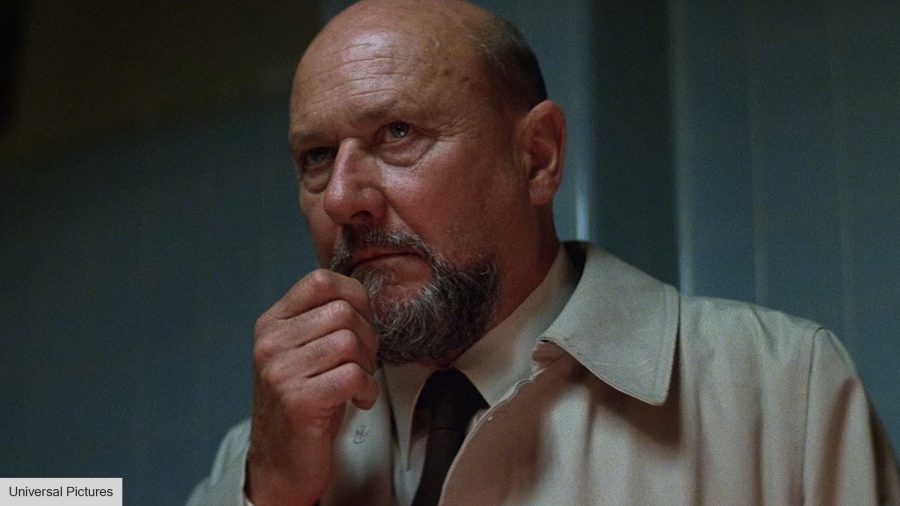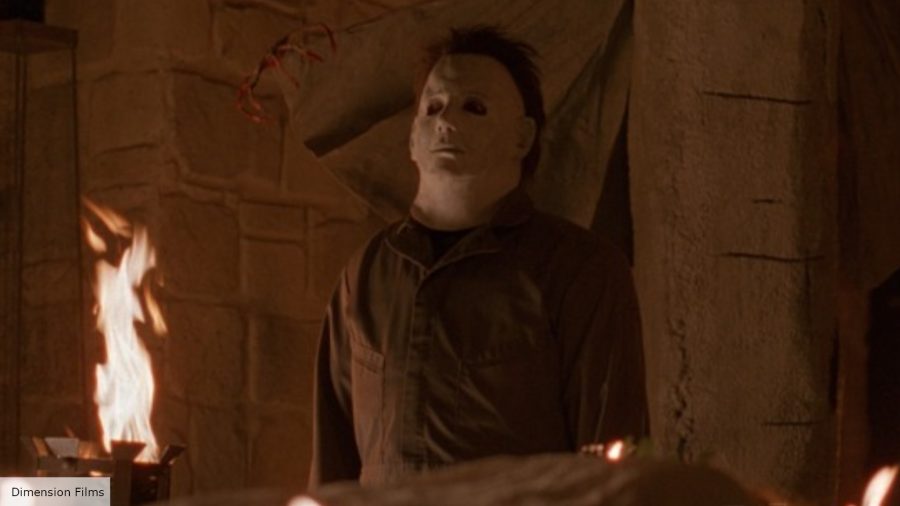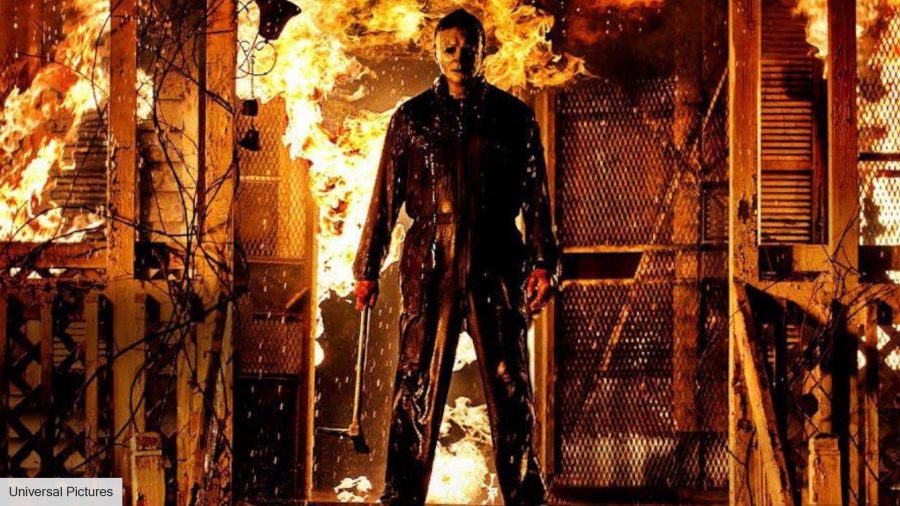What is Michael Myers’ origin? Few figures are as intimidating as the masked killer from John Carpenter’s 1978 classic, Halloween. For decades Michael Myers and his trusty kitchen knife have haunted our nightmares, making him one of the most recognizable figures in horror today. However, with four different timelines across the Halloween franchise, figuring out the backstory of this iconic slasher is no easy feat.
Over the years, we’ve seen the Halloween movies get rebooted, remade, retconned, and then rebooted all over again. But through all the ups and downs, some of the best horror movies and some of the worst, one thing has (almost) remained constant – Michael Myers. Watching the Halloween movies in order will tell show you Michael, the soulless killer known as ‘The Shape,’ Michael stalking the good people of Haddonfield across generations.
But who is this masked menace? Well, here at The Digital Fix, we think Halloween is one of the best movies ever made, so we’ve done our best impression of Dr. Loomis and delved into Michal Myers’ origins. Warning spoilers ahead for one of our favorite John Carpenter movies.
What is Michael Myers’ backstory?
Born in the year 1957, Michael Myers began his murderous career at an early age, killing for the first time when he was just six years old.
Only Rob Zombie’s 2007 remake strays from the traditional Myers story – and since it has never been canon, we are chucking all of that horror movie’s choices out the window (you’re welcome). With Zombie’s timeline out of the way, let’s get down to business.
Living a normal life in the quiet suburban town of Haddonfield with his parents and older sister, Judith Myers, Michael’s life was pretty ordinary – until one fateful Halloween night.
On October 31, 1963, a young Michael, while dressed as a clown for his typical trick-and-treating routine, walked into his sister’s room with a kitchen knife. The young scamp then proceeded to stab his teen sister to death.
After the bloody incident, Michael was sent to Smith’s Grove Sanitarium and was assigned to Dr. Loomis, who became fascinated by the boy. Loomis studied Michael through his childhood and adolescence, becoming obsessed with his inhuman coldness and eerie evil demeanor.
But as any fans of slashers know, you can’t keep a cold-blooded murderer down for long, which brings us to the events of Halloween (1978).
After 15 years under observation, Michael, now 21 years old, breaks out of the institution and makes his way back to Haddonfield – stopping only briefly at a hardware store to pick up his iconic white mask.
Upon returning to his childhood home, he happened to see a high schooler, Laurie Strode, at his old house, where she was returning a set of keys for her realtor dad. Michael would then become fixated on poor old Laurie, tracking down the young woman and trying to butcher her with a kitchen knife, killing everyone who got in his way.
What happens next to Michael after confronting Laurie (Jamie Lee Curtis) for the first time depends on whether you are a fan of the ’80s sequel Halloween 2 or buy into David Gordon Green’s new trilogy that effectively retcons all of the previous Halloween timelines.
In Halloween 2, Michael escapes the law but ends up ‘dying’ (not really) in a final standoff with Dr. Loomis as he tries to kill Laurie again. However, in Halloween (2018), which is a direct sequel to Carpenter’s original film, it is revealed that after the events of the 1978 movie, Michael was captured and put back into an institution – which he would, surprise, surprise, manage to escape from yet again.
The reason for Michael’s killing spree is also one of those things that’s up for debate in the Halloween fandom, thanks to all those pesky reboots. If you are looking at the original timeline that goes up until the sixth instalment, The Curse of Michael Myers, Michael’s motives were the result of being cursed by a demon named Thorn.
If you look at the H20 timeline, which continues on from Halloween 2, Michael manages to survive his fight with Loomis and returns to try and kill Laurie. Why, you ask? Well, in Halloween 2, it was revealed that Laurie is actually one of Michael’s sisters, explaining why he was so hellbent on killing her in the first place.

However, as we said previously, Green’s take on the series, following Halloween (2018), retconned all of the other Halloween sequels, so Michael’s motivation changed.
This was great news for all of us who hated the Laurie sister reveal, as she and Michael are no longer related in canon, meaning that Judith is his only sibling.
Michael’s updated backstory isn’t him being motivated by bloody intent towards his family members. Instead, he is purely a cold-blooded psychopath who is unpredictable and almost robotic in his lack of empathy and concern for human life.
In short, he has no rhyme or reason for his actions, making him terror personified and one of the scariest fictional serial killers to grace pop culture.
Who inspired Michael Myers?
So it may shock you, and undoubtedly cause more sleepless nights, to learn that Michael Myers’s origin has roots based on real-life events.
In the 2003 documentary Halloween: A Cut Above the Rest, Carpenter revealed that the iconic character was inspired by his own personal experiences after visiting a mental institution and meeting an unidentified boy.
“I had a class—psychology or something—and we visited a mental institution,” the director said. “We visited the most serious, mentally ill patients. And there was this kid, he must have been 12 or 13, and he literally had this look.”
Carpenter later described how the look was like an evil stare, and to be specific, the cold and empty look he saw that day would later help bring Michael Myers to life. “It was unsettling to me,” he explained. “It was like the creepiest thing I’d ever seen as a stranger.” He then went on to state that this mysterious real-life boy’s stare could best be described by Dr. Loomis’ words in the original film:
“This blank, pale emotionless face. Blackest eyes. The devil’s eyes. I spent eight years trying to reach him and then another seven trying to keep him locked up because I realized what was living behind that boy’s eyes was purely and simply evil.”
As you can see, Michael’s origins aren’t entirely fictional; some of his backstories are based on real life. However, Carpenter did cite another character that also played a part in Michael’s creation.
Paired with the real-life stare, the filmmaker stated that he was struck by Yul Brynner’s portrayal as a “killer robot that couldn’t be killed” in the 1973 movie Westworld.
Having both real and fictional influences, Michael successfully embodies the perfect creepy killer. With his mask outlining his dark eyes, and his inhuman level of fixation on his target Carpenter found the perfect balance to scare the pants off us all.
Is Michael Myers Supernatural?
Whether Michael Myers is supernatural or now depends on the timeline. Sometimes he’s human. sometimes he’s more than that.
In the original Halloween timeline, the Myers family is descended from an ancient druidic tribe. In druidic culture, or at least in the fictional description of it in the ’90s movie The Curse of Michael Myers, the demon Thorn was responsible for thousands of deaths. To appease the nefarious spirit, one child from a selected family holding the druidic bloodline was inflicted with the curse of Thorn.
Those who were granted the curse would go off on a family murder spree, killing their next of kin as blood sacrifices for the demon, therefore saving the rest of the tribe from Thorn’s wrath.
As you can probably guess, in the original timeline, Michael is one of these cursed cases, and at the age of six, he was turned into a soulless husk and subsequent demon vessel. So if we are talking about the original timeline, yes, Michael is supernatural.
However, it is a little less clear in the new timeline, i.e., Green’s movies. In the new flicks, all of the druid and blood sacrifice stuff has been retconned, and currently, there is no mention of Thorn in the new movies.
There is also no overt supernatural explanation or status put towards Michael at this time, apart from his impressive strength and the Haddonfield community constantly calling him the bogeyman. So, we are hesitantly calling him human for now.
We say hesitantly because, in the 2021 movie Halloween Kills, we saw the killer get shot, burned, beaten with a bat, and stabbed multiple times – yet still manage to survive and brutally kill everyone in a five-foot radius. It seems a bit suspicious and a bit on the immortal side. Still, the Halloween Ends ending makes it clear that he was only ever just a regular man. He’s evil personified, and that means he could come back any time.
If you’re a fan of horror films and gore (and you should be because this genre has the most fun), then you should check out our guides explaining the origins of Freddy Krueger, Pinhead, and Jason Voorhees. You might also like our guides to the Texas Chainsaw Massacre timeline and the Friday the 13th movies in order.
For more Halloween fun, you can read our Halloween Ends review, or you can check out our list of the best Halloween movies. For upcoming releases, here’s a guide to all the new movies heading our way in 2023. As horror fans, we’re particularly excited about the Five Nights at Freddy’s movie release date and the Saw 10 release date, and we think you should be too.
